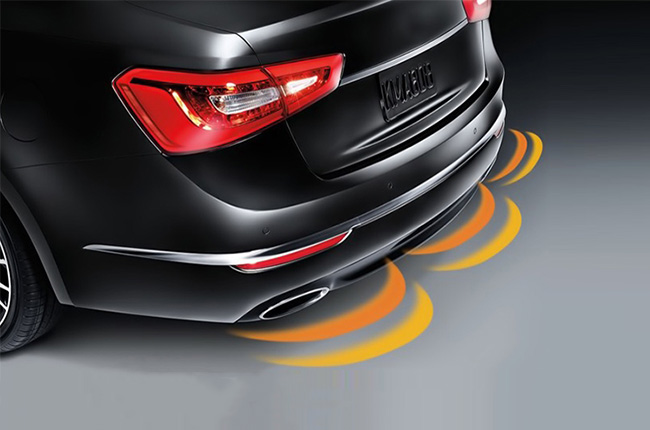
Parking a small car is easy while parking a larger vehicle is hard without assists. With the advent of touch screen infotainment system and backup cameras, reversing into a slot is not as nerve-racking as before.
However, more affordable cars usually get the short end of the stick when it comes to features. A backup camera may not even be included in the package, but for convenience’s sake parking, sensors in the rear should ideally be on the spec sheet because it’s added protection to your investment. More expensive cars will have a combination of parking sensors and a backup camera. If the manufacturer is fond of snazzy additions, front parking sensors will also be included.
How they work

Parking sensors work by bouncing a small ultrasonic wave off an obstacle. The sensor works as an emitter and as a receiver so it can relay information to a screen or a device that beeps intermittently depending on the distance from an obstacle.
These sensors also activate when you put your car into its reverse gear. An audible beep will play followed by several beeps that indicate how close you are. The intervals will get shorter and shorter the closer you get to the object you’re nearing.
The perfect pair

If we are talking about the best-case scenario in terms of parking sensors, you should ideally have a set of parking sensors coupled with a backup camera. This enables you to see and hear how close you are to an object because you may be paying attention to your side mirror, but neglect to notice a pole that your rear bumper is about to kiss.
If we are talking about the total package, you should have an all-around camera system and parking sensors both in the front and rear. At the very least, an ideal setup is a backup camera and a set of sensors. Less than ideal is a set of rear parking sensors. In this case, you should opt for at least four to cover all corners of the rear bumpers.
Some manufacturers that sell mainstream cars are already incorporating multiple parking sensors into the front and rear. Mazda and Nissan are among the few mainstream brands that have these features in their cars at the time of this article’s writing. More brands may continue to incorporate these systems into automobiles, which would make navigating the tight streets of Metro Manila, easier.
They have other uses
These devices don’t just help you get into a slot with ease, it can also notify you of potential hazards when backing out of a slot, also known as the Rear Cross Traffic Alert. The pillars in cars are getting thicker due to stricter safety standards, hampering visibility. Sensors are another way to increase a driver’s level of awareness because they can sense objects that are quite a way off.
Latest Features
-
The 6 things every Ford Ranger must pass before it leaves the factory / Featured Article
Every Ford Ranger, from the base model to the Ranger Raptor, goes through a full inspection process before it leaves the factory. This includes six steps that make sure it’s ready to drive a...
-
Which GAC AION EV is best for your everyday lifestyle? / Featured Article
The GAC AION lineup has something for everyone, maybe you're after space, speed, or just a smooth city drive. Here's a quick breakdown of which model might work best for your day-to-day life...
-
The AutoDeal Awards 2024: Celebrating excellence in the auto Industry / Featured Article
The AutoDeal Awards 2024: Celebrating excellence in the auto Industry
Popular Articles
-
Cheapest cars under P700,000 in the Philippines
Jerome Tresvalles · Sep 02, 2024
-
First car or next car, the Ford EcoSport is a tough package to beat
Jun 18, 2021
-
Car Maintenance checklist and guide – here’s everything you need to know
Earl Lee · Jan 12, 2021
-
Most fuel efficient family cars in the Philippines
Bryan Aaron Rivera · Nov 27, 2020
-
2021 Geely Okavango — Everything you need to know
Joey Deriquito · Nov 19, 2020
-
Family cars in the Philippines with the biggest trunks
Sep 20, 2023
-
Head to head: Toyota Rush vs. Suzuki XL7
Joey Deriquito · Oct 28, 2020
-
Why oil changes are important for your car
Earl Lee · Nov 10, 2020
-
2021 Kia Stonic — What you need to know about it
Joey Deriquito · Oct 16, 2020
-
Top 7 tips for buying a used car in the Philippines
Joey Deriquito · Nov 26, 2020




